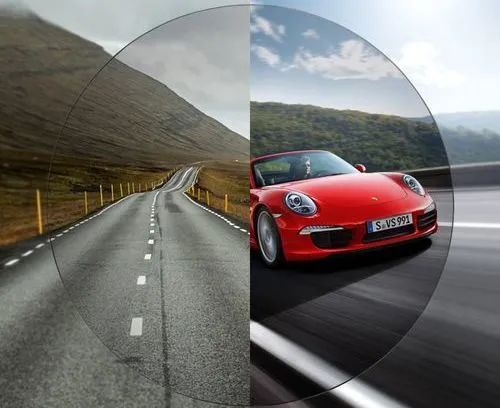
The specific gravity is 1.32, which is half that of glass and is light in weight. Impact-resistant, unbreakable and highly secure (in line with the standards of the US FDA); Comfortable to wear; It is convenient to process and has a wide range of applications (including those used in semi-frame and frameless spectacle frames). The product range is rich (single light, dual light, multifocal, cataract, color-changing, etc.); Its absorption capacity for ultraviolet rays is likely to be higher than that of glass lenses. It can be dyed in various colors; The thermal conductivity is low, and the situation of "water mist" caused by water vapor is better than that of glass lenses.

Silver halide particles are added to the raw materials of the lenses. Under the action of ultraviolet rays in sunlight, the silver halide decomposes into halogen ions and silver ions, thus changing color. The degree of discoloration varies according to the intensity of ultraviolet rays in sunlight. When the ultraviolet rays disappear, the lenses return to their original color.
--A lens that allows light to vibrate only in a certain direction to pass through is called a polarizing lens.
The purpose of using polarizing lenses is to block the dazzling light reflected on a certain plane.
--Precautions for use:
It has poor durability. When in prolonged contact with water, the surface film layer is prone to peeling off.
When installing the frame, if internal stress occurs, it will affect its polarization effect.

-Advantages:
Enable presbyopic patients to avoid changing glasses when looking at near or far objects.
We suggest that: before getting glasses each time, one should learn about the wearer's work and study conditions. These conditions of his will determine what "tasks" the pair of glasses he is about to get fitted with will face for a considerable period of time in the future. Among them, the main dividing line is between outdoor workers and indoor workers, and indoor workers can be further subdivided into computer workers and others. Among them, the student group is a very special existence. Only by understanding the future working scenarios in which this pair of glasses will be fitted can it be adapted.